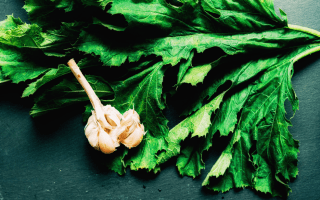Whenever we bring home a new condiment, there’s always the initial struggle to find the “refrigerate after opening” fine print on the label. Of course, a debate usually ensues with our significant other on how “that’s not where it was stored when they were growing up.” So, where are we supposed to store each of them? Here are some tips for storing condiments at home.
Storing ketchup, mustard and barbecue sauce
Ketchup is often found in many refrigerators, but doesn’t it sit out in diners across the country? Because of its acidity, you can keep most open ketchup bottles in the pantry for up to a month. It will last 6 months when refrigerated. Heinz ketchup is actually considered shelf-stable due to its acidity. However, since all ketchup brands don’t have the same acidity, it’s recommended to refrigerate them all. Mustard and most barbecue sauces can be open and kept in the pantry for a month as well. However, mustard lasts up to a year and barbecue sauce lasts up to 4 months in the refrigerator. The colder temperature also preserves the taste and texture.
Where to store soy sauce and vinegar
Growing up, we always kept soy sauce on the kitchen counter. Because it’s fermented and highly concentrated, it’s considered self-stable for about a year. You can extend the life and quality of its taste by refrigerating it. However, tamari is a different story. The San-J brand instructions read, “Refrigerate after opening for best quality. Once opened, it is best to use within 1 month for table use and within 3 months for cooking use.”
Vinegar is acetic acid and not many microorganisms can survive in it. Therefore, you can store it in the pantry. Apple cider vinegar, red wine vinegar and rice wine vinegar are fine stored in the pantry also.
Storing hot sauces
Many hot sauces have a high vinegar and salt content, which makes them inhospitable environments for bacteria growth. The capsaicin, the source of their heat, also keeps bacteria away. For this reason, they are good at room temperature for 6 months, but keep in the refrigerator for 2 years. Refrigeration also helps retain the flavor and bright red color of most hot sauces. However, oil-based hot sauces, like chili crisp, require refrigeration. This also goes for sauces containing raw garlic, mango or pineapple-like salsa or chutney.
Where to store mayonnaise safely
Because eggs are an ingredient in conventional mayonnaise, it needs to be refrigerated. However, many vegan mayos have similar instructions to refrigerate after opening.
Storing syrup, honey and sweet spreads
Pure maple syrup is just maple tree sap boiled to a thicker consistency. Because it’s made without preservatives, maple syrup should head to the refrigerator once opened. However, “table syrup” or “pancake syrup,” which includes various preservatives, can be stored in the pantry.
Because of honey’s acidity, low moisture content and antibacterial properties, it can be kept in the pantry. Archaeologists have even found unspoiled honey in Egyptian tombs. It will actually crystallize in the refrigerator. If it does, place the jar in a bowl of warm water and stir until the crystals melt. Crystals are not a sign of spoilage.
Once opened, jams and jellies should be consumed six months after opening and stored in the fridge. However, hazelnut spread should not be kept in the refrigerator. In fact, it will dry up and become unusable.
Where and how to store nut butters
Because of the low moisture and high fat content, nut butters have an inhospitable environment for bacteria to grow. It can stay fresh for 2 months in the pantry once opened. However, it can last 9 months in the refrigerator. But, with natural nut butters, the oil can go rancid in a month if it’s not refrigerated. Most natural nut butters don’t go through the same commercial manufacturing process that kills most bacteria.
A brilliant tip is storing the jar upside down in your pantry after bringing it home. The oil rises to the top so when you turn it right side up to open, voilà. The oil will be at the bottom of the jar and SO much easier to stir. Also, it’ll stay mixed without additional stirring after it’s refrigerated. Now you won’t have nut butter concrete at the bottom of the jar.
If you want more tips on handling and storing your condiments and food, there’s a great resource from the Cornell University’s Institute of Food Science and the Food Marketing Institute.
Read more posts about Nutrition






